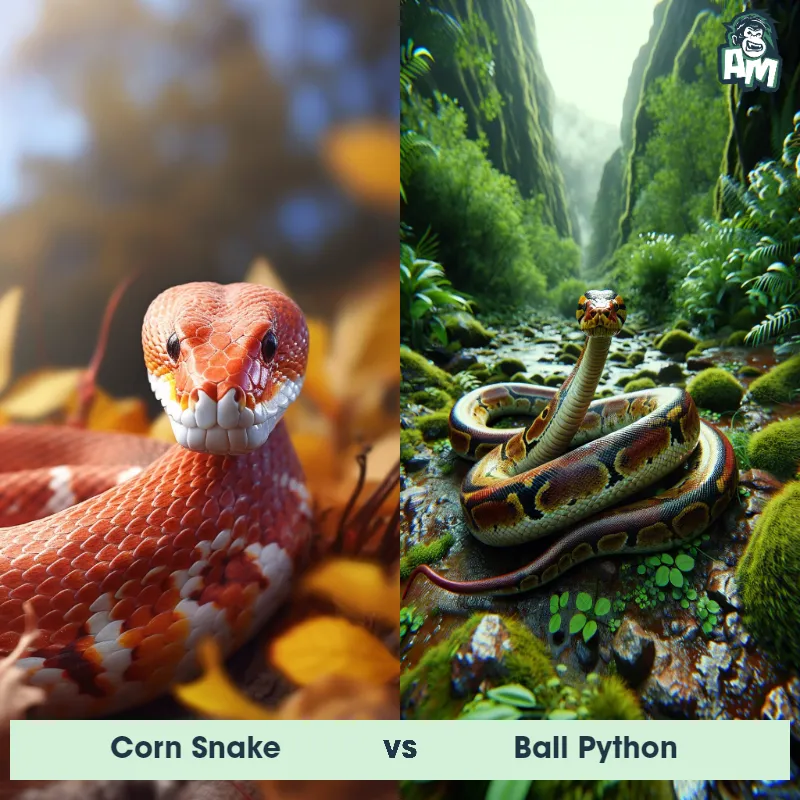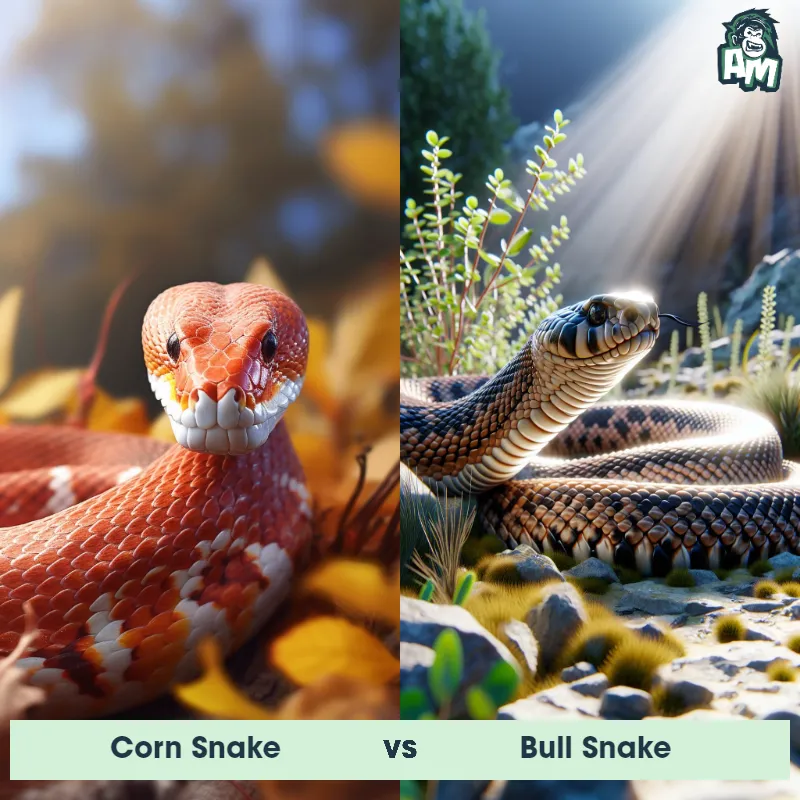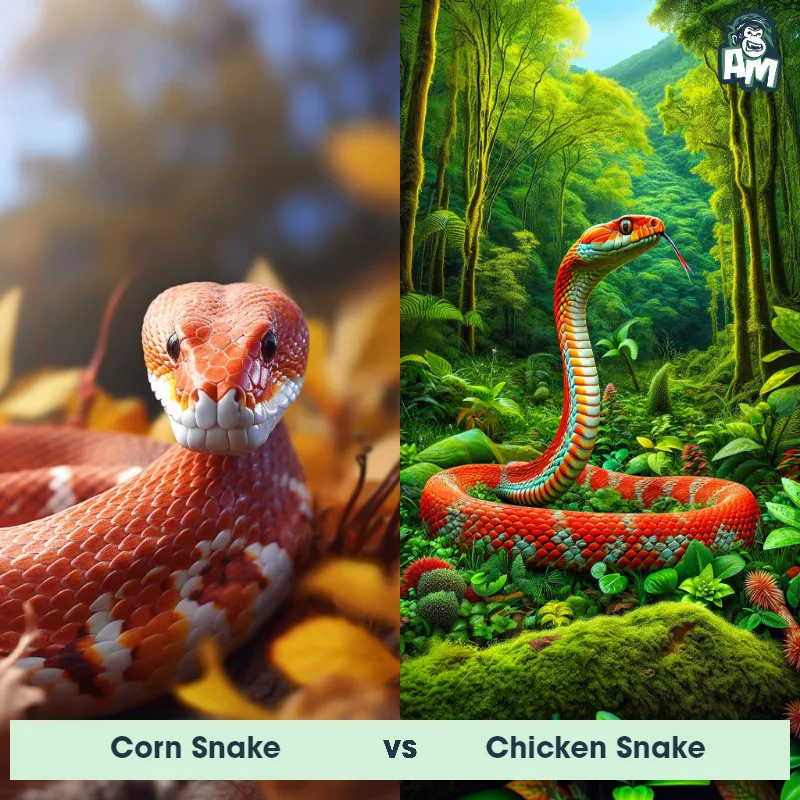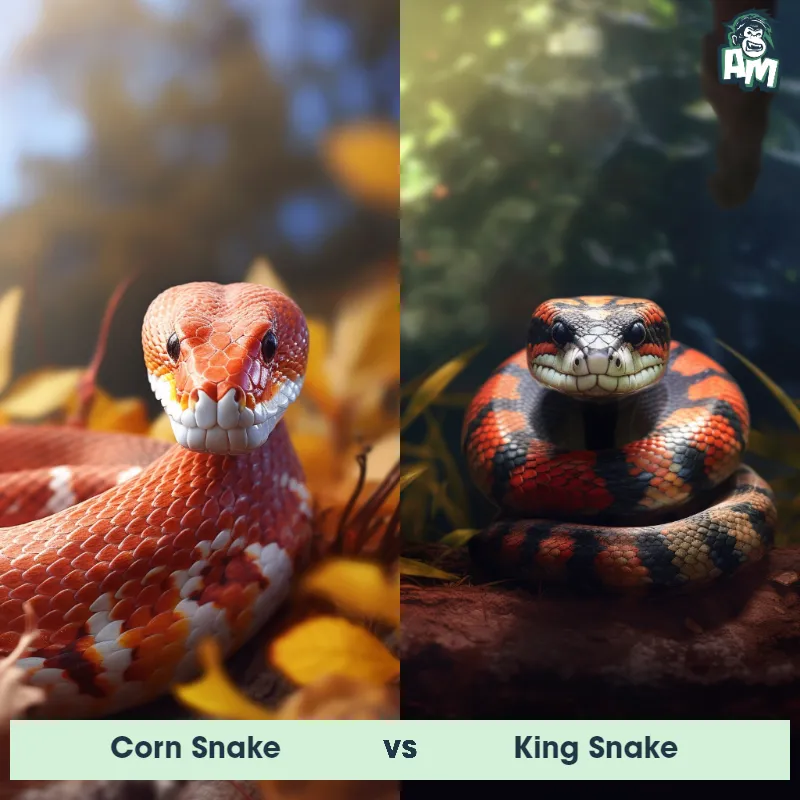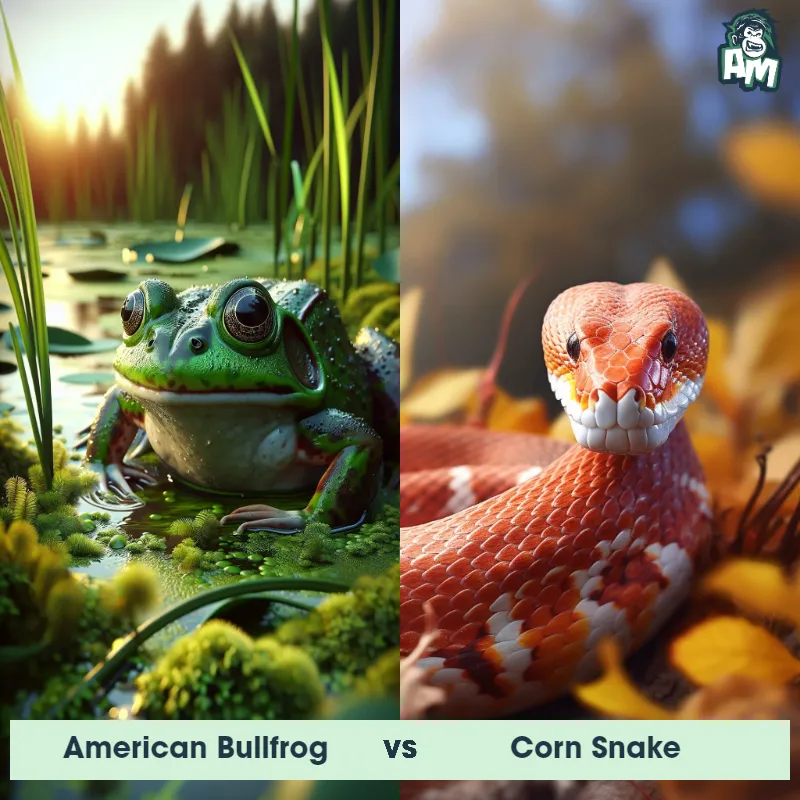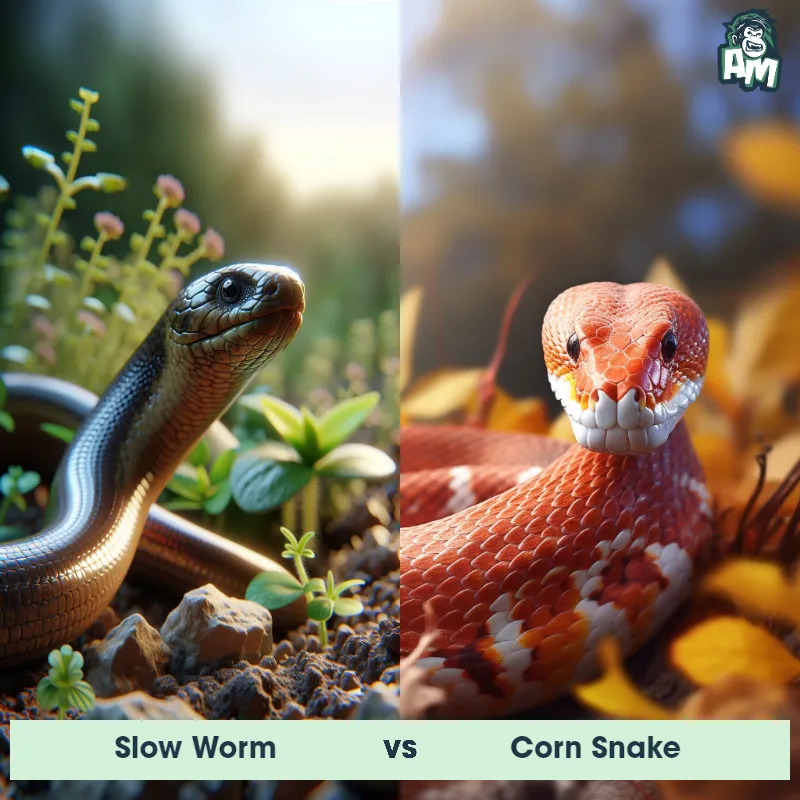The Corn Snake
The Corn Snake, also known as Pantherophis guttatus, is a non-venomous colubrid snake native to the southeastern parts of the United States. These snakes have a slender body and can grow to an average length of 3-5 feet. They are characterized by their vibrant coloration and distinct patterns, which consist of red or orange blotches outlined in black on a brown or gray background. Corn Snakes are renowned for their docile nature and are commonly kept as pets due to their ease of care and relatively long lifespan of around 15-20 years. They are proficient climbers and excellent swimmers, making them adaptable to various habitats like forests, grasslands, and even rural residential areas.
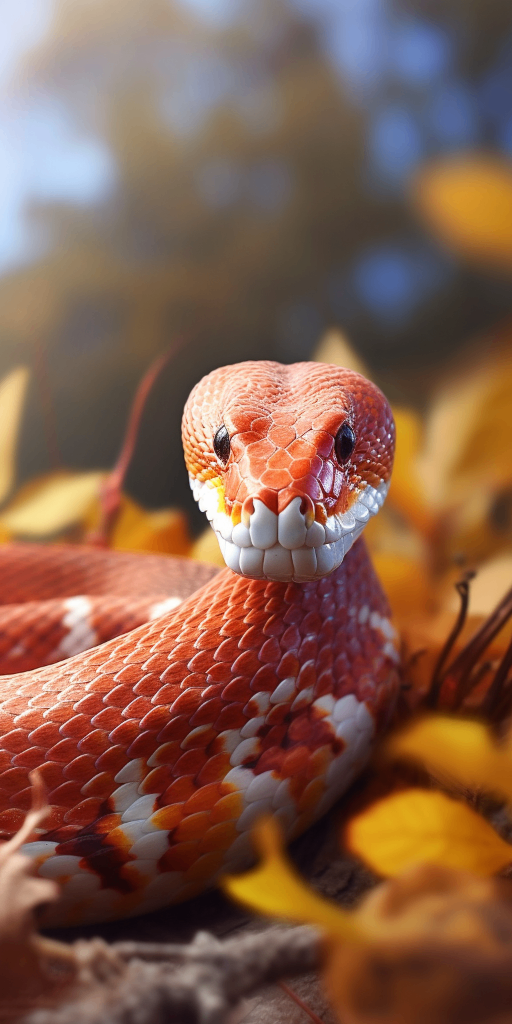
| Corn Snake | |
|---|---|
| Size | Up to 6 feet (1.8 meters) |
| Weight | Up to 2.5 pounds (1.1 kilograms) |
| Speed | Speed: 5 mph (8 km/hr) |
| Key Strength | Constricting ability |
| Biggest Weakness | Lack of venom |
| Scientific Name | Pantherophis guttatus |
| Family | Colubridae |
| Habitat | Forests, fields, rocky areas |
| Geography | North America |
| Diet | Rodents, birds, small animals |
| Lifespan | 6 years - 20 years |

The Corn Snake
The Corn Snake, also known as Pantherophis guttatus, is a non-venomous colubrid snake native to the southeastern parts of the United States. These snakes have a slender body and can grow to an average length of 3-5 feet. They are characterized by their vibrant coloration and distinct patterns, which consist of red or orange blotches outlined in black on a brown or gray background. Corn Snakes are renowned for their docile nature and are commonly kept as pets due to their ease of care and relatively long lifespan of around 15-20 years. They are proficient climbers and excellent swimmers, making them adaptable to various habitats like forests, grasslands, and even rural residential areas.
Fun Fact: One interesting fact about Corn Snakes is that they got their common name from their propensity to seek out cornfields or barns, which offer abundant prey such as mice and rats, as well as warm and sheltered spots for egg-laying.
| Corn Snake | |
|---|---|
| Size | Up to 6 feet (1.8 meters) |
| Weight | Up to 2.5 pounds (1.1 kilograms) |
| Speed | Speed: 5 mph (8 km/hr) |
| Key Strength | Constricting ability |
| Biggest Weakness | Lack of venom |
| Scientific Name | Pantherophis guttatus |
| Family | Colubridae |
| Habitat | Forests, fields, rocky areas |
| Geography | North America |
| Diet | Rodents, birds, small animals |
| Lifespan | 6 years - 20 years |
Corn Snake Matchups
We use AI to simulate matchups between the Corn Snake and other animals. Our simulation considers size, strength, and natural predatory behaviors to determine the most likely outcome.
Corn Snake: Diet, Predators, Aggression, and Defensive Behaviors
What do Corn Snakes eat?
Corn snakes are carnivorous reptiles that primarily feed on rodents, such as mice and rats. They have also been known to eat birds, frogs, and lizard eggs in the wild. As constrictors, they will grab their prey with their teeth and then coil around them to suffocate them before swallowing them whole.
Do Corn Snakes have any predators?
While adult Corn Snakes do not have many natural predators due to their size and defensive mechanisms, they are still vulnerable to larger predators such as birds of prey, raccoons, and larger snakes. Their eggs are especially at risk from predators like raccoons and opossums.
Are Corn Snakes aggressive?
Corn snakes are generally docile and non-aggressive towards humans. They are popular as pets due to their calm demeanor and ease of handling. However, they may become defensive and strike if they feel threatened or cornered.
Do Corn Snakes fight?
Corn snakes are solitary animals and do not engage in fighting with others of their species, except during mating season. During this time, male Corn Snakes may wrestle with each other to establish dominance and secure mating rights with a female.
How do Corn Snakes defend themselves?
When threatened, Corn Snakes have several defense mechanisms to protect themselves. They may release a foul-smelling musk to deter predators, vibrate their tails to mimic a rattlesnake, and even strike with their teeth if necessary. Their primary defense, however, is to retreat and hide in a safe place.
What is the biggest weakness of Corn Snakes in a fight?
Despite their defensive tactics, Corn Snakes are relatively small and lack physical strength compared to larger predators. In a fight, their best defense is to avoid conflict altogether and rely on their speed and agility to escape danger.
Fun Fact: Corn Snakes are not only excellent at escaping predators but are also adept escape artists themselves. They can contort their bodies, squeeze through small gaps, and even climb vertically to find an exit, which makes them notorious for unexpectedly disappearing from their enclosures.
Fun Fact: Unlike some other snake species, Corn Snakes are known for their docile and generally calm temperament. With regular handling, they can become accustomed to human interaction and may even enjoy being held. These characteristics, along with their beautiful appearance, have made them one of the most popular snake species kept as pets around the world.



